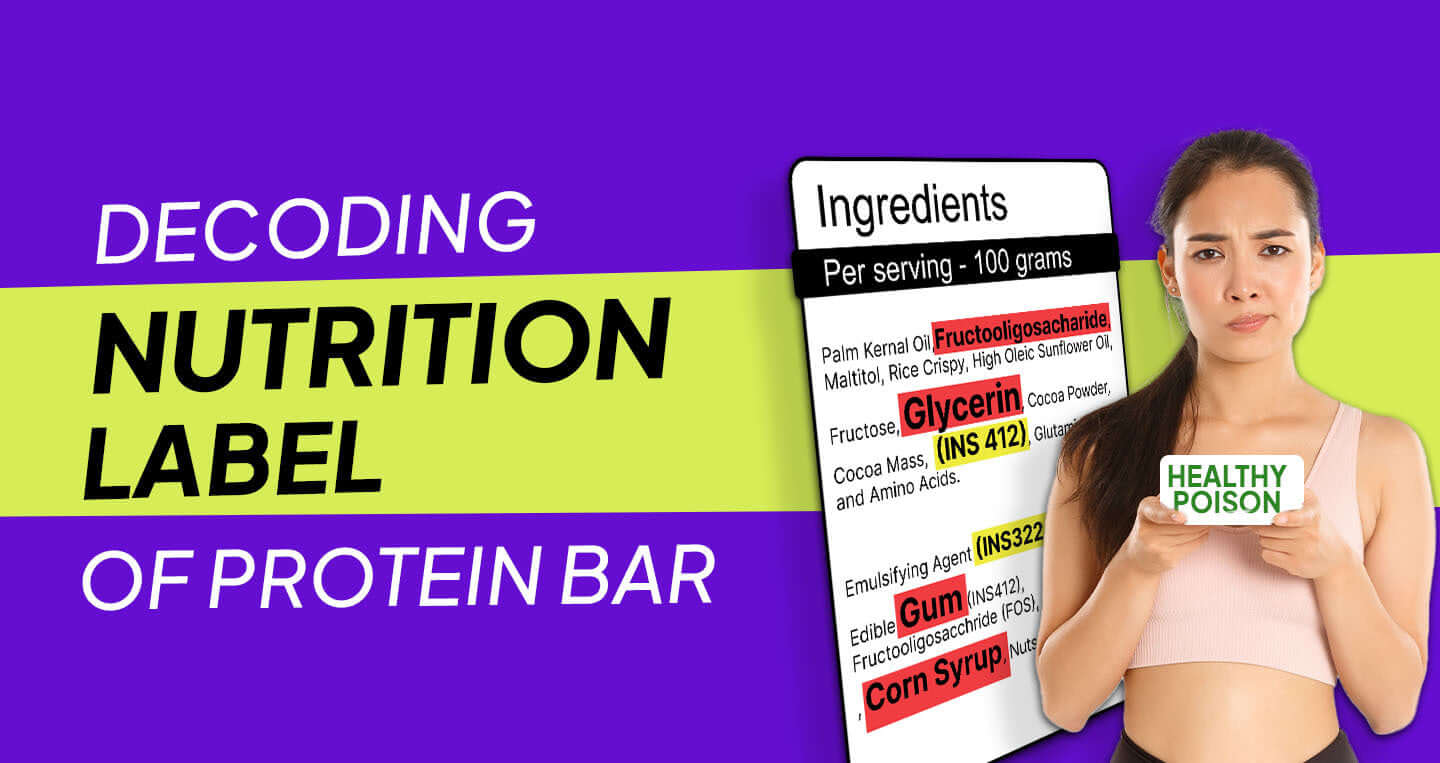Shopping Cart
More discount will appear at checkout.
Don’t stop now! Offers & discounts, if available, will appear at checkout.

The front of a protein bar can be convincing but the truth lives on the back. Bright colors, bold claims, and words like “clean,” “natural,” or “energy-packed” are great for catching attention, but they don’t tell you what’s really inside. That’s why the nutrition label matters.
It’s where you’ll find the actual story or how much protein you’re getting, how much sugar is hiding in there, and whether the ingredients are real or just cleverly disguised additives.
If reading labels feels overwhelming, you’re not alone. But once you know what to look for, it gets easier and fast. In fact, with a few simple checks, you can tell in seconds whether a bar is the fuel your body needs or just another snack dressed up as something healthy.
Don’t worry.
Reading a nutrition label doesn’t have to feel like decoding a secret code. Once you know what to look for, it actually becomes easy to spot which bars fuel your body and which ones just look the part.
Let’s break it down in the simplest way possible.
Let’s not forget why you picked up a protein bar in the first place — the protein. Start by checking how much you’re actually getting. A good bar should give you at least 10–20 grams of protein. If it’s under 8g, it’s probably not doing much. If you’ve just finished a workout, go for 15g or more. Your muscles will thank you. If you’re just looking for a light snack to hold you over between meals, 10–12g is solid.
Also, not all protein sources are created equal. Look out for quality ones like whey protein isolate, pea protein, or brown rice protein. These are easier for your body to absorb and actually put to use.
Here’s the not-so-sweet truth — some protein bars have more sugar than a chocolate bar. Flip the bar over and check for added sugar. Ideally, keep it under 7g. If sugar, syrup, or anything ending in “-ose” (like glucose or fructose) is in the first few ingredients then that’s a no from me. Natural sweeteners like dates, honey, or stevia? Those are better options. But even then, moderation is key.
Also, a quick heads-up — sugar alcohols like erythritol or maltitol may be low-calorie, but they can cause bloating for some people. If you’ve ever felt weird after eating a bar, that might be why.
You know that “full for hours” feeling? That’s fiber doing its job. A great bar doesn’t just give you protein — it also keeps you satisfied. Look for at least 3–5 grams of fiber on the label. This helps with digestion, slows down sugar absorption, and makes you less likely to raid the fridge 30 minutes later.
If a bar has zero fiber? It’s probably more of a dessert than a functional snack.
If a bar has ingredients you wouldn’t cook with or can’t pronounce then that’s a red flag. Scan the list for real stuff: oats, nuts, seeds, dates, protein powder, spices. Keep it simple.
Avoid bars with long ingredient lists filled with preservatives, artificial sweeteners, and hydrogenated oils. The shorter the list (and the more familiar it sounds), the better the bar is for your body. A good rule? If your grandma wouldn’t recognize it, your body might not either.
Fats aren’t the enemy. In fact, healthy fats help you feel full, support your brain, and give you long-lasting energy. If your bar has 5–10 grams of fat, and those fats come from ingredients like nuts, seeds, or coconut, you’re golden. What you don’t want to see are things like partially hydrogenated oils — that’s trans-fat, and its bad news for your heart and health.
Calories are all about context. If you’re grabbing a bar as a light snack, aim for 150–200 calories.
If it’s your post-workout fuel or you’re skipping a meal, 200–300+ calories makes sense. Calories aren’t good or bad — they just need to fit your day and your goals. What matters more is where those calories are coming from.
Carbs get a bad reputation, but your body needs them especially if you’re active. What matters most is what kind of carbs you’re eating. Carbs from whole grains, fruits, and oats are great. Carbs from added sugar and syrups? Not so much. If you’re watching your carb intake, check the net carbs.
Net carbs = Total carbs - Fiber - Sugar alcohols
This gives you a better idea of how much the bar will affect your blood sugar.
This is probably the most underrated tip. Are you looking for a quick post-workout protein boost? mid-meeting energy snack? A way to curb 5 PM hunger pangs?
Knowing why you’re eating the bar helps you figure out what kind you actually need. One bar won’t be perfect for every situation — and that’s okay.
Protein: 10–20g
Added Sugar: Under 7g
Fiber: At least 3g
Fats: 5–10g from healthy sources
Calories: 150–300 based on your purpose
Ingredients: Real, simple, and pronounceable
Carbs: From clean sources with balanced net carbs
At the end of the day, protein bars can absolutely be healthy, if you choose the right ones. They can keep you energized, support your goals, and curb those random cravings but only if you’re paying attention to what’s inside. So the next time you’re standing in the snack aisle or scrolling through options online, don’t just fall for marketing. Turn the bar around. Check the facts. Trust the label, not the logo.
Looking for a bar that makes label reading easy?
Try DomNom Protein Bars — clean ingredients, no added sugar, plenty of protein, and taste you’ll actually look forward to.
Healthy doesn’t have to be complicated. Sometimes, it just starts with reading the label right.